Archive for September, 2021
Ford Movements
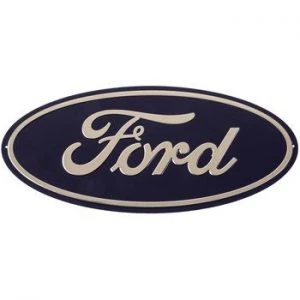
Hot off the Press News has Ford investing big money in EV production. All up, Ford and a South Korean supplier will spend $11.4 billion US on Ford’s EV production and expansion. Ford hopes this spend will enable them to produce more than one million EVs per year in the second half of this decade. The buzz words used in new and future cars include the term electric vehicles or EVs. Established automakers like Ford are racing to try and close the gap on Tesla’s EV lead. As you may be aware, Tesla produces a range of EVs, and Tesla are currently on the way to selling more than 800,000 electric cars this year. Tesla is currently the most valuable automaker in the world, with a market capitalization of nearly $800 billion US. Ford’s market value is $56 billion US.

Ford F-150 Lightening
Ford’s big spend will be its 2nd biggest spend in its history. Under the climate change banner and the Biden government, this latest US multibillion-dollar move to quickly transfer production plants to EV production is seen as a fast track phasing out of gasoline-powered cars and trucks as part of the global push to combat climate change. I won’t debate the science here.
Ford is to build 2 battery plants in Kentucky and 1 in Tennessee under the joint venture with its main battery cell supplier, SK Innovation of South Korea. In addition, Ford will build an assembly plant at the Tennessee location to churn out EV trucks. Ford will invest $7 billion and SK Innovation $4.4 billion, the companies have said. Ford expects electric vehicle models to make up 40% of their vehicle production by 2030. That’s only a little over 8 years away!
Ford’s new truck plant and battery factory in Tennessee is likely to be the place that will produce a new battery-powered Ford F-Series pickup truck, this following the previously announced F-150 Lightning pick up truck. I have to say that the F-150 Lightening is an impressive beast! Ford has said a mix of both the public and businesses had already placed 150,000 reservations for purchasing the F-150 Lightning.
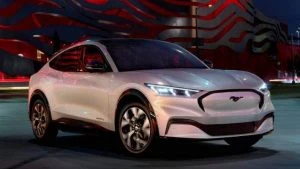
Ford Mustang Mach-E
Also this year, Ford began selling the Mustang Mach-E, which has taken a sizable market share from Tesla. Ford also plans to add an EV delivery van into the mix by the end of the year. Then, in early 2022, the electric F-150 Lightning will roll out of their showrooms and silently onto the tarmac.
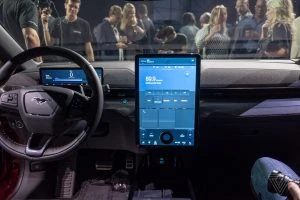
Ford Mustang Mach-E
Mr. Jim Farley, Ford Motor’s president and CEO, has recently said that making electrical vehicles affordable should be among the top priorities for automakers, so that the average vehicle-buyer can purchase one. This is good news, as a new EV is well out of most people’s budget.
He also made a couple of rather poignant comments: one on a key issue on questioning how EV production will impact labour/jobs (a subject rather close to home with our relatively recent Ford and Holden closures), and the other on materials. So, apparently, it costs 30% less to manufacture the Ford electrical vehicles. This will definitely affect production rates and employment long term. Then there is also the issue of battery supply and the rare minerals (i.e., lithium, cobalt) needed to power them, said Farley. Mr Farley stated, “We have to bring battery production here, but the supply chain has to go all the way to the mines. That’s where the real cost is, and people in the U.S. don’t want mining in their neighbourhoods. So, are we going to import lithium and pull cobalt from nation-states that have child labour and all sorts of corruption, or are we going to get serious about mining? … We have to solve these things and we don’t have much time.”
Here in Australia, we haven’t jumped on the EV wagon just yet, and if we are going too, then there is so much infrastructure that will be needed to be implemented before owning an EV becomes a viable option for people like me. Even the thought of the costs involved in getting the right infrastructure is eyewatering, and, like most impatient home renovators and idealistic politicians, the job must be done yesterday! The hard working folk pay for it, of course!
There seems little patience on offer by many governments and climate change activists for making the move to EVs (and other new transportation technology like an EV repower on your existing car) a more balanced and delicate affair. For now, owning an EV is very much for the elite, so Farley is on the right track when he says that the cost of EV ownership must be addressed very quickly.
Ford still has many plants throughout the U.S. However, like other big automotive manufacturers, Ford also has locations right around the world. Ford has many production plants scattered about the globe, and these include assembly plants, engine plants, forging plants, stamping plants and transmission plants. Here, in Australia, Ford still has special engine production and stamping plants.
On a more local note, Ford has a new feature called ‘FordPass’ offered on all their new models sold in Australia. FordPass has a few systems worthy of a mention that include:
Remote Start+, where minutes before leaving, you can start your connected vehicle’s engine from your mobile device in order to heat or cool the cabin using the last known climate control setting.
Vehicle Status, where you can check key variables such as fuel level and your odometer on the FordPass App to help plan your journey.
Remote Lock/Unlock, where, conveniently, you can use your mobile device to make sure the car doors are locked or unlocked without being anywhere near your vehicle. If only it could do that for my house front door!
Vehicle Locator, where you can check your vehicle’s exact location in the FordPass App, which is particularly useful if you share your vehicle with one or more members of your household or if you have forgotten where you parked it. However, if you’ve forgotten where you’ve parked it, then maybe you better get breath tested!
Vehicle Health Alerts, where the FordPass App sends Vehicle Health Alerts directly to your mobile device, pre-empting service needs and general maintenance such as low washer fluid.
Live Traffic, where this feature enhances your SYNC 3 Navigation system by delivering up-to-date traffic updates. This technology allows you to adjust your recommended route based on the traffic conditions, helping you to arrive more relaxed and on time.
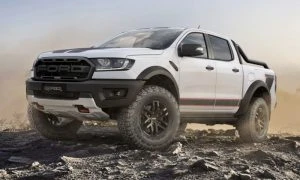
Ford Ranger Special Ediiton
In this second half of 2021, Ford Australia offer a nice broad range of vehicles that include the Puma, Escape and Everest SUVs; the Ford Focus car; the Ford Ranger Ute; the Transit Commercial range that has custom vehicles, vans, buses and cab-chassis models; the Ford Performance range that includes the Fiesta and Focus ST, the Focus ST-3, the Ranger Raptor, the Mustang and Mustang Mach-1; and the Special Edition Rangers and Everests.
It is good to see Ford keeping pace with any EV and hybrid automotive technology and movements; though at what societal and environmental cost? New Ford vehicles are good, and Ford offers a very complete package for all new vehicles in the Ford range. Once you’ve driven a Ford, its not so easy to change out of the brand come new car buying territory.
Classic Citroen
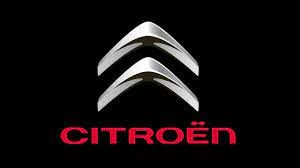
As mentioned in a more recent blog, Stellantis is official: PSA and FCA have merged under the name Stellantis. The name Stellantis originates from the Latin verb “stello” which means “to brighten with stars”. Car maker, Stellantis, now has 14 car brands under its wing, and they include: Abarth, Alfa Romeo, Chrysler, Citroen, Dodge, DS Automobiles, Fiat, Jeep, Lancia, Maserati, Opel, Peugeot, Ram, and Vauxhall. As far as its size goes, Stellantis is now the 4th-largest carmaker in the world, behind Toyota, VW Group, and the Renault-Mitsubishi-Nissan Alliance.
As you might have noticed, one of the 14 car brands is Citroen. Stellantis is planning to launch a new model under the Citroen brand for India and Latin America in 2022. The idea is for Stellantis to push outside the boundaries of its conventional European sales territory and branch further into emerging markets where it has had much less exposure.
Citroen left India in the 1930s, so some water has certainly past under the bridge since then. At a time when some other foreign carmakers are leaving India after struggling to make a profit there, Stellantis is seizing an opportunity with its Citroen-based products and heading straight on in. The company recently said it plans to produce a new version of the Citroen C3, which is commonly a city car in Europe, will be launched into India and Latin America in the second half of 2022. The car will be produced in India through a joint venture with CK Birla, and in Brazil. It is likely to be the first of 3 models aimed primarily for India and Latin America – these 3 models being produced over the next 3 years. By 2030, Stellantis expects India to become the world’s 3rd biggest car market after China and the U.S.
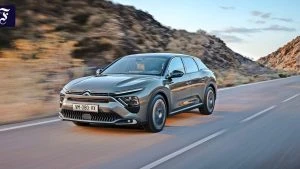
Citroen C5 X
However, Stellantis isn’t running away from Europe car markets anytime soon. It is well-known that the big German brands are dominating the midsize car segment in Europe, however Stellantis’s European focus is ramping up. Following the Peugeot 508 and glorious Citroen DS9, Citroen has a new flagship model that they want to put against the classy Mercedes E-Class, BMW 5 Series, and Audi A6 models. What is exciting is that the new Citroen C5 X will be a car that is a bit sedan, a bit wagon and a bit SUV in its design. The relatively flat roofline has a bit of sedan in its lines. The drawn-out rear-end brings the station wagon style, and then the tall ride height is more SUV – reminiscent of the C5 Aircross. At 4805 mm long, 1865 mm wide and 1485 mm tall, the new Citroen C5 X is smaller than its potential German rivals. It offers 545 litres of boot space behind the rear seats, which can be expanded to 1640 litres after the rear seats have been folded flat.
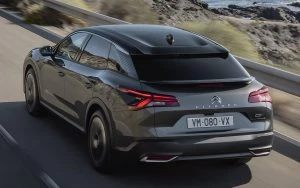
Citroen C5 X
It has to be said that the new Citroen C5 X boasts a quirky exterior that takes after the 2016 Cxperience concept. Its interior will be loaded with technology – all the very best tech that Citroen has to offer. A 12-inch touchscreen for infotainment, a large head-up display with support for augmented reality, a fully digital driver’s display, separate physical controls for the climate-control settings, sumptuous seating, and superior ride quality and comfort are just some of the features of the soon-to-be available Citroen C5 X will provide.
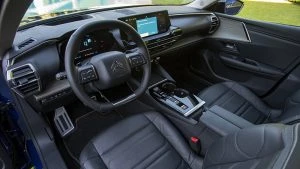
Citroen C5 X
Speaking of Citroen ride quality, the new Citroen C5 X flagship will come with the patented Citroen Advanced Comfort suspension, with the plug-in hybrid version making comfort even further advanced by featuring an active suspension. It boasts what the French automaker refers to as Progressive Hydraulic Cushioning, which when combined with exceptionally comfy seats, it should enable a silky-smooth ride even on bumpy surfaces – all in legendary Citroen fashion.
A variety of petrol-fed engines are planned; however, Citroen highlights the plug-in hybrid powertrain with 168 kW and more than 50 km of electric range as a special model to take on the gradual change to hybrid and EV technology. The Citroen C5 X PHEV model will be able to travel at speeds of up to 135 km/h in full electric mode.
The brand-new Citroen C5 X, made under the Steallantis name, will go on sale in Europe in the second half of 2022. Let’s hope that we see it as part of Citroen Australia’s line-up, too. With Australia’s growing love of the SUV, it would seem a logical model to bring over here…
For something a little different!
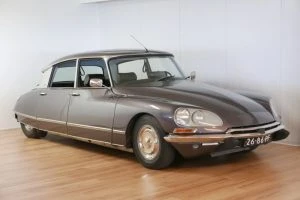
Citroen DS 1970
The 1955–1975 Citroen DS is still regarded as one of the most unique and interesting cars to have ever been made. The idea of retrofitting one of these to modern electric propulsion would be in the spirit of all things Citroen. A company known as ‘Electrogenic’ decided to reinvent the Citroen DS model with a battery-powered conversion.
The Oxford-based company retained the original car’s aerodynamic body but swapped the 2.0-liter petrol-fed engine for a brushless electric motor that produces 89 kW of power and 235 Nm of instant torque – a rather meaty performance upgrade. Interestingly, the power is delivered to the front wheels through the car’s original manual gearbox.
Providing the electric energy for the powertrain is a 48.5-kWh battery pack that is housed within the DS’s body. Electrogenic stated a real-world driving range of about 225 km per charge was doable. A 29-kW charger will refill the batteries to full capacity in about two hours. If the customer wanted a larger battery for a higher range between charges, it can be provided in a combination with a more powerful charger.
One of the fine attributes of the old Citroen DS was its silky-smooth hydro-pneumatic suspension. Electrogenic has also improved the hydro-pneumatic system by replacing the standard mechanical pump with an electric pump, which is more silent and delivers a more sophisticated ride than the original.
From the outside, the only visual differences between the original DS and the electric-powered conversion are the lack of exhaust pipes and the subtle but distinctive “DS EV electronique” decal on the boot.
Steve Drummond, director of Electrogenic, says that “Repowering classic cars with all-electric drive brings a number of benefits, from the ease of use to reliability and performance gains”. Of course, the quiet EV function brings out the best in old-timer classics.
What Are The Different Levels Of Driving Autonomy?
As auto manufacturers race against one another to release self driving vehicles, motorists will soon be presented with all types of autonomous driving solutions. With so many options likely to be available, as well as some current models that already claim to offer self driving functionality, motorists should be aware of the technology’s various iterations – namely, the five levels of autonomy.

Level Zero: This is what we’ve been accustom to in vehicles right up until today. These vehicles are dependent upon full driver input, with the exception of automatic safety features which are designed to prevent or mitigate the impact of an accident.There is no degree of automation which goes into the driving process.
Levels One and Two: This next band of technology is a step up from complete dependence on drivers, to a system where support is offered to manouevere and adjust the speed of the vehicle. The important feature to distinguish this stage is that it is only support which is offered, as the driver will still need to maintain a connection with the car. In a way, this adds a degree of control and surety when changing lanes and activating cruise control, since prompts will be made to the driver to maintain their focus and thus keep the car operational.
Level Three: This is the threshold at which point the vehicle becomes responsible for controlling the driving functionality, as well as responding to the driving environment. This is also the level at which point motorists may begin to disengage from the vehicle without it shutting down. Motorists may still be required to respond to unforessen events or directional queries, however, by and large the vehicle can navigate more complex driving conditions. A number of car manufacturers are currently operating at this level, even though forecasts had the industry meeting this level much sooner. Tesla is among those currently very active in this space as a frontrunner.

Level Four: The car is now equipped to fully navigate itself and also react as necessary in the event of an emergency. Any human dependence or interaction is limited specifically to the activation process when turning on the system upon ignition, and in an advisory capacity if required for navigation input (e.g. route selection) – rather than requests. There are only a couple of players currently operating at this level, and that includes heavyweights Waymo, owned by Google’s parent company Alphabet, and another being Uber.
Level Five: The truly driverless vehicle. With level 5 capacity, a vehicle is capable of transporting its occupants without the need for a driver to be present. Similarly, the car may also be used without occupants or a driver as a remote vehicle to collect a person, or instead deliver an item to a specified address.
Importantly, the development in this space is taking place overseas, where the infrastructure and testing is in a better position to support development. Closer to home, not only do we need to see regulatory change, but also a sizeable shift in motorists behaviours. Until then, it’s a long waiting game for new car buyers hoping to take up a fully-autonomous vehicle.
BMW Brilliance

BMW has always been a favourite standout brand of mine, and BMW is forging new models and technology even as we speak. It has been a bit of a gruelling year-or-two with the covid shenanigans, and car manufactures are only one small segment of the global economic pie to have taken a sizable hit. The shortage of semiconductors has been, and still is, a problem because cars rely on these items for controlling anything from your electric windows to all the fancy driving assistance aids. However, the winds are changing, and the rebound is occurring. Luxury car marques like BMW seem to be doing very well, and even with the electronic chip shortages being a bit of an issue it seems that BMW will get through this period in fairly good shape. There is always a talking point re this special car marque; sometimes the designs might look great to some and not so flash for others, but there is always a gem being turned out from this great team of motoring designers and manufacturers. BMW cars are more often than not great to drive, good looking, practical and advanced cars.
In this covid recovery period, various chief financial officers recently mentioned that, for now, luxury marques like BMW would consciously undersupply demand levels, which seems a prudent, sensible path to take, as BMW new car prices are holding up very well – quite bullish in fact. The increased pricing power has already trickled down to the bottom lines for BMW and Daimler. Mercedes achieved a 12.2% return on sales in the last reported quarter, which was up from 8.4% in the same period in 2018 (2018 being of a period not affected by the pandemic or diesel emissions litigation costs). BMW achieved a 16% return on sales, which was up from 8.6% in 2018. BMW also reported a $5.7 billion net profit in the second quarter of this year, suggesting global auto markets are continuing to recover from the pandemic — particularly when it comes to luxury cars like BMW and Mercedes.
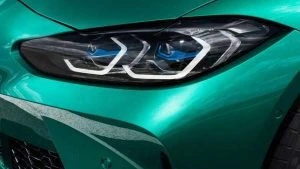
BMW M4 Minty Green
This is great news for BMW and car lovers in general, but what’s new in BMW’s box of tricks? A very cool thing that BMW revealed at the recent Munich Motorshow (early September 2021) was to be found in the BMW M4 corner, where this manic machine, with its impetuous acceleration, showed a jaw-dropping minty green sheen to its beautiful, sexy exterior. The M4 Competition wore a Mint Green paint job and sat upon gorgeous bronze 20-inch rims. Both of these options are available as part of the brand’s expanded BMW Individual customization line, which you can find on BMW’s online configurator, where more than 130 other paint options and eight different wheel options are available. This latest BMW M4 Competition also had a new fibre front splitter, a restyled rear bumper, a rear wing, and some unique side skirts that were all made with carbon fibre. Carbon fibre interior seating surfaces and trim pieces are also part of the online configurator. So, try before you buy!
The Munich motor show also allowed the public to preview a hydrogen-electric BMW X5 that is due to enter very-limited production in 2022. This is an exciting moment because the vehicle was first previewed in 2019 as the i Hydrogen Next concept. It’s currently in the prototype stage, and early this month it was confirmed with the go ahead, going by the name of BMW iX5 Hydrogen.

A hydrogen-electric vehicle is like a battery-electric vehicle, but instead of drawing power from electricity out of the charged battery the hydrogen-electric vehicle relies on a hydrogen fuel-cell stack to produce electricity power. BMW’s iX5 Hydrogen has the hydrogen fuel-cell positioned up front where it draws hydrogen from 2 tanks, one in the X5’s transmission tunnel and another under the rear seats. The tanks are made from carbon-fibre-reinforced-plastic and can hold about 5.9 kg of hydrogen at more than 10,000 psi. Tank filling takes only a few minutes. The hydrogen fuel-cell combines hydrogen with oxygen from the air to create electricity. This process only has water (H2O) as a by-product – Wow! The electricity primarily powers a single motor at the rear axle but is also used to charge a small battery that steps in from time-to-time to deliver extra grunt to the motor during high-load situations.
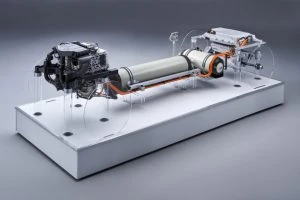
BMW iX5 Hydrogen Platform
The BMW iX5 Hydrogen will have a total system power output of 275 kW. The hydrogen fuel cell, on its own, generates about 125 kW. The vehicle’s aerodynamically shaped 22-inch wheels are wrapped in a new Pirelli tyre that is made from natural rubber and a wood-based synthetic fibre known as rayon. These two materials replace much of the petroleum-based synthetic rubbers used in modern tyres.
The extensive field testing has already started in earnest within Europe. Particular focus points have had the engineers examining how effectively the CO2-free drivetrain works in real-life conditions. Also, they are measuring metrics which include reliability, safety, and efficiency during everyday conditions to ensure that the new model is perfect for mass production. Hydrogen fuel cell technology has the potential to supplement internal combustion engines, plug-in hybrid systems, and battery-electric vehicles. The BMW iX5 Hydrogen has hydrogen tanks that can be filled quickly in only 3–4 minutes.
BMW states that the small batch of iX5 Hydrogen models that are destined to be built in 2022 will only be used for demonstration and testing purposes. BMW doesn’t expect to have any hydrogen-electric vehicles at dealerships until 2025 at the earliest and depending on the direction that the automotive markets take.
Newest off the showroom floor is the all-new BMW iX3 with its refreshed exterior design. The new BMW iX3 has a sexier appearance and introduces the M Sport Package as standard. BMW has achieved an impressive CO2 emission assessment for this next-generation iX3, and the vehicle boasts an exceptionally efficient drive system. Extensive use of secondary raw materials in the manufacture of aluminium castings and thermoplastics combines with the new iX3 boasting an absence of rare earth materials and the use of more green electricity in its production.
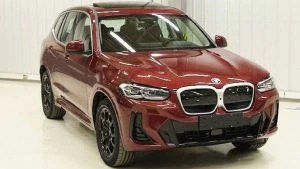
BMW iX3 2022
The BMW iX3 has a kidney grille that is larger still, and it has a single-piece frame that comes in Pearl-effect Chrome with blue accents to match with the BMW i styling cues. Its headlights have been made slimmer. It also boasts 19-inch black aerodynamic wheels, an automatic tailgate, adaptive suspension, a heated steering wheel, a panoramic sunroof, and Smartphone integration with Apple CarPlay and Android Auto.
BMW is a bit of a landmark in the automotive world, a benchmark, the perfect blend of performance, luxury and practicality. In the future, BMW wants to be ready to supply customers with their powertrain of choice, whether it be gasoline, diesel, battery or hydrogen. In the case of hydrogen, BMW sees it as an opportunity for customers that favour long-distance driving or who happen to live in regions without adequate battery recharging infrastructure.
I have so many favourite BMWs and other cars, including the 4.0-litre Falcons, which have rolled our roads over the last few decades of motoring, but let’s not be nincompoops and let’s embrace new ways of automotive power; let’s embrace the new BMW i technology.